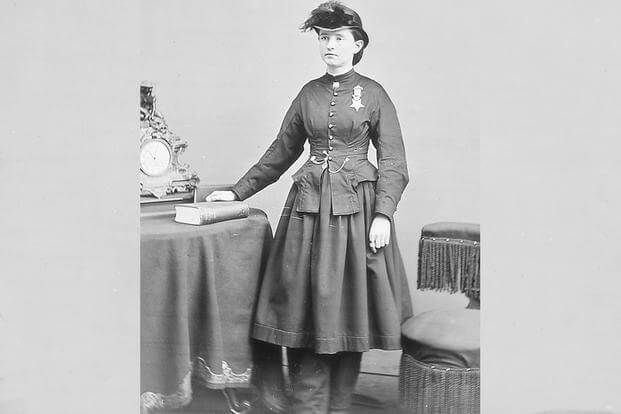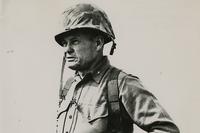She was a surgeon, a POW and a spy -- and out of the nearly 3,500 Medal of Honor recipients, she was the only woman to receive one. Her medal was even actually rescinded just before she died, but Dr. Mary Walker is now justly recognized as a pioneer who helped change the face of medicine during the Civil War.
Walker was born in Oswego, New York, in 1832 to abolitionist parents. Her father thought that the era's corsets and skirts were unhealthy and restrictive, and encouraged his five daughters to dress as they liked. Mary, in particular, embraced the new style of "bloomer" pants; in later life, she usually wore full men's evening dress when she gave a speech or attended a function. She deemed most women's clothing "immodest and inconvenient." Her parents encouraged her to pursue an education, and in 1855, graduated as a medical doctor from Syracuse Medical College. She was the second woman (after Elizabeth Blackwell) to graduate from the college.
Walker went into private practice for a few years, but then the Civil War broke out in 1861. She wanted to join the Army as a surgeon but wasn't allowed because she was a woman. Because of her credentials, she didn't want to be a nurse, either, so she volunteered for the Union Army, thus becoming the first female surgeon in Army history.
Aside from her wartime efforts, Walker was also an outspoken advocate for women's rights. As the war raged on, feminists also struggled to further their cause, which included being able to wear clothing that enabled better mobility. Walker chose to wear what was known as the "Bloomer costume" as a modified uniform all throughout the war. It was a dress-and-trouser combination that had gone out of favor long before the war began, but she didn't care. She wore it anyway.
Walker eventually switched to wearing men's clothes and was even arrested for impersonating a man several times. In her defense, she argued that she was given special permission by the government to dress that way.
In September 1863, after two years of work near the Union front lines, she was appointed assistant surgeon in the Army of the Cumberland. She may or may not have been acting as a spy at this time. However, in 1864, she was captured by Confederate troops and spent four months in jail in Richmond, Virginia.
For her wartime service, Mary Walker was paid $766.16 and was provided a monthly pension lower than those of most war widows. In November 1865, having left government service for good, Walker was awarded the Medal of Honor by President Andrew Johnson, even though she was a civilian who had never been a commissioned officer in military service.
When standards for the Medal of Honor were revised in 1910, Walker's medal was one of 900 rescinded. The new standards specified "direct combat with an enemy" as the guiding criterion for the nation's highest award. Walker's valiant Civil War service as an Army surgeon and her four months as a Confederate prisoner of war did not qualify.
But Walker refused to return her hard-earned honor. When federal marshals arrived to take Walker's Medal of Honor in 1917, she met them at the door wearing it around her neck and brandishing a 12-gauge shotgun. Evidently the weapon spoke volumes, because Walker kept her medal, wearing it every day until her death in 1919.
However, her efforts on behalf of her Medal of Honor — to this day, the only one awarded to a woman -- paid off in 1977, when hers was reinstated by an Army board that cited her "distinguished gallantry, self-sacrifice, patriotism, dedication, and unflinching loyalty to her country, despite the apparent discrimination because of her sex."















